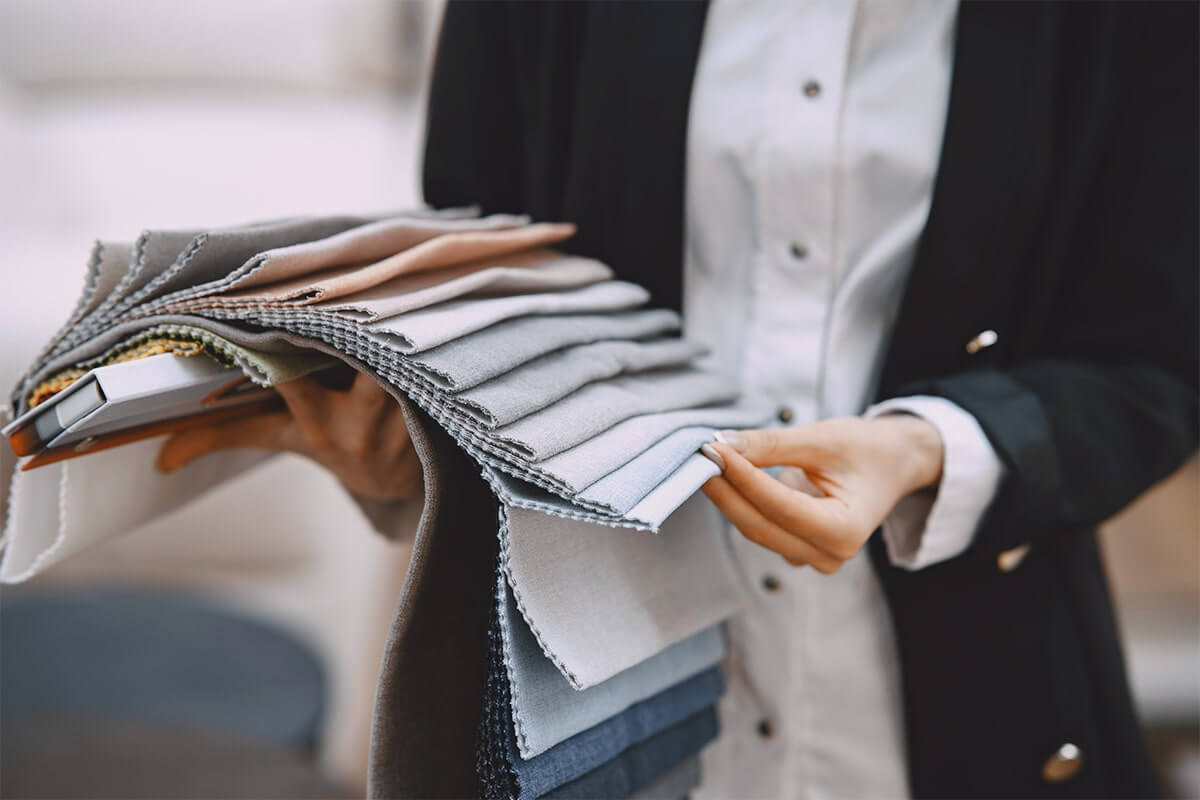
Choosing the Right Fabric: The Key to Quality, Comfort & Style
Fabric selection plays a pivotal role in garment manufacturing, significantly influencing the final product's comfort, durability, and aesthetic appeal. The right fabric choice ensures that the garment not only looks good but also functions as intended.
Understanding the key characteristics of fabrics, aligning them with the garment's purpose, and considering sustainability can enhance the quality and longevity of the final product. This comprehensive guide will provide insights into selecting the ideal fabric for your garments, ensuring they meet the highest standards of quality and functionality.
Understanding Fabric Differentiae
Fabrics are composed of various fibers and are constructed using different techniques that determine their texture, strength, and flexibility. The fundamental characteristics of a fabric play a crucial role in determining its suitability for specific applications. These include fiber content, weave or knit structure, weight, drape, and finishing treatments.
The fiber content of a fabric dictates its feel, breathability, and durability. Natural fibers such as cotton, wool, linen, and silk offer excellent comfort and breathability, making them ideal for garments worn in warm climates. On the other hand, synthetic fibers such as polyester, nylon, and spandex provide durability, moisture resistance, and elasticity, making them suitable for sportswear and activewear.
Fabric Types & Features: Select the Best for Style & Function
The method of fabric construction also impacts its characteristics. Woven fabrics, made by interlacing threads at right angles, tend to be more structured and less stretchy, making them suitable for tailored garments. Knitted fabrics, formed by looping yarns together, offer greater flexibility and elasticity, which is ideal for activewear and casual garments.
Fabric weight and drape are also critical considerations. Light fabrics, such as chiffon or silk, flow effortlessly and are well-suited for evening wear and dresses. Heavier fabrics, like denim or wool, provide structure and warmth, making them suitable for outerwear and formal suits.
Finishing treatments enhance fabric properties and usability. These can include water resistance, stain resistance, wrinkle resistance, and antimicrobial treatments. Understanding how these characteristics interact ensures that the chosen fabric meets both functional and aesthetic requirements.
Fabric Choices for Every Occasion: Comfort, Elegance & Performance
The intended purpose of the garment is a key factor in fabric selection. Different garments require specific fabric properties to perform optimally. For instance, casual wear should prioritize comfort and breathability, making cotton, rayon, and jersey knits excellent choices. These fabrics allow for ease of movement and provide comfort in everyday activities.
High-Performance Fabrics for Activewear & Outerwear
For formal wear, luxurious fabrics such as silk, wool, and high-quality blends are preferred. These fabrics exude elegance and sophistication while providing a polished look suitable for professional or evening occasions. Wool blends are particularly popular for suits due to their durability, wrinkle resistance, and structured appearance.
Activewear and sportswear demand high-performance fabrics that offer stretch, moisture-wicking properties, and breathability. Fabrics such as spandex, polyester blends, and moisture-resistant nylon are commonly used to provide the necessary flexibility and comfort during physical activity.
Outerwear fabrics must be selected based on the level of protection required. Coats and jackets designed for colder climates should incorporate insulating materials like wool or down-filled synthetic fabrics. For rainwear, waterproof materials such as Gore-Tex or coated polyester ensure protection from the elements.
Evaluating Fabric Quality
The quality of fabric directly impacts the durability and longevity of the garment. Assessing key quality indicators can prevent premature wear and enhance the overall performance of the finished product.
Durability is one of the most critical aspects of fabric quality. Fabrics with high tensile strength and resistance to abrasion last longer and maintain their appearance over time. Testing for fabric durability ensures that garments can withstand repeated use and washing without losing their shape or integrity.
Colorfastness is another important factor. A fabric's ability to retain its color after washing and exposure to light ensures that garments remain vibrant and appealing. Poor colorfastness can result in fading, bleeding, or uneven coloration, which can negatively impact the garment's aesthetic appeal.
Shrinkage and stretch recovery should also be considered. Fabrics that shrink excessively after washing can alter the garment's fit and size. Similarly, materials with poor stretch recovery may lose their shape over time. Pre-washing fabrics before production can help assess their behavior and prevent potential issues post-purchase.
Assessing Sustainability in Fabric Selection
Sustainability is becoming an essential factor in fabric selection, as consumers and manufacturers alike seek to minimize their environmental impact. Choosing eco-friendly materials and ethical production processes contributes to a more sustainable fashion industry.
Natural and organic fibers, such as organic cotton, bamboo, and hemp, are preferred for their biodegradability and reduced environmental footprint. Organic cotton, for example, is grown without harmful pesticides, making it a more sustainable choice than conventionally grown cotton.
Recycled fabrics are another excellent option. Recycled polyester, made from repurposed plastic bottles, reduces waste and conserves resources. Similarly, deadstock fabrics—leftover materials from textile mills or brands, help reduce fabric waste by repurposing excess materials for new designs.
Preferring Sustainable & Ethical Fabrics for Quality & Responsibility
Ethical production practices also play a significant role in sustainable fabric selection. Ensuring that fabrics are sourced from manufacturers who adhere to fair labor practices and environmentally responsible processes is crucial. Certifications such as Global Organic Textile Standard (GOTS) and OEKO-TEX ensure that fabrics meet sustainability and safety standards.
Choosing the right fabric for garments is a complex yet essential process that impacts the quality, durability, and sustainability of the final product. By understanding fabric characteristics, aligning fabric choices with the garment’s purpose, evaluating quality, and considering sustainability, manufacturers can create high-quality garments that meet both aesthetic and functional requirements.
Quality Starts with Fabric: Make the Right Choice
Fabric selection should not be an afterthought but rather an integral part of the design and production process. A well-informed choice ensures that garments not only look and feel great but also perform optimally in their intended use. As sustainability continues to shape the fashion industry, making conscious choices about fabric sourcing and ethical production will further enhance the reputation and responsibility of manufacturers.
With a keen understanding of fabric properties and an emphasis on quality and sustainability, the fashion industry can continue to innovate while creating garments that are both stylish and enduring.
